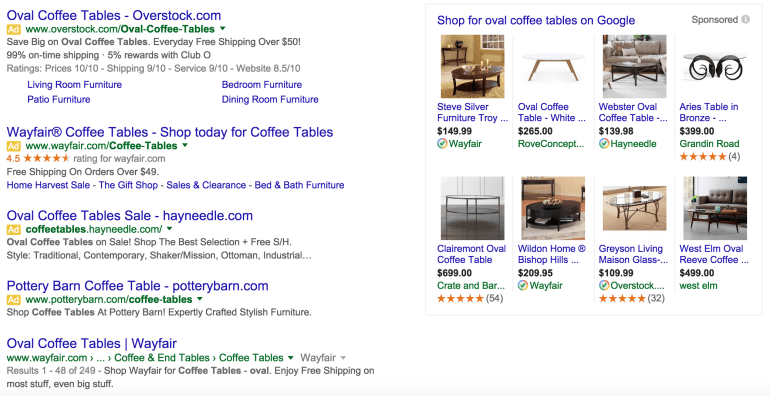While no one denies the importance and affect organic SEO and search ranking can have on a brand, pay-per-click (PPC) advertisement is arguably faster and more efficient. Whether you aim to attract local B2C clients or international B2B partners to collaborate with, PPC ads can help you on both fronts and then some. According to 99 Firms, PPC visitors are 50% more likely to engage with your link’s content compared to organic search results, while they can simultaneously increase your brand awareness up to 80% on the global level.
There is real value to PPC marketing but the only way to make the most of paid ads on popular search engines such as Google or Bing is to pay close attention to the sales pitches’ writing and formatting. With that said, let’s take a look at how you can create a successful PPC ad copy for both B2B and B2C sectors depending on their expectations and your marketing goals.
Advantages of Using PPC Ads
Before we dive into the “how”, let’s take a look at why PPC advertisement is more than a viable solution for your networking needs. As the name might suggest, PPC ads revolve around “per click” payments on your part. This means that you as a brand effectively pay only for actual clicks and engagement with your link – not for the placement itself.
Depending on your industry, niche and local targeting, the cost-per-click (CPC) will go higher or lower over time. In that regard, the numerous benefits PPC ad placement can bring your brand in terms of B2B and B2C lead generation include but are not limited to:
- Instant results in terms of lead engagement
- Increased brand recognition, awareness and industry authority
- Streamlined data collection and easier performance analysis
- Higher return on investment (ROI) compared to organic optimization
Successful PPC Ad Copywriting Guidelines for B2B and B2C
1. Short Form is a Must
PPC advertisement will quickly and efficiently place your brand on top of the organic search results for individual users. However, your creativity in writing is limited by the length of ad copy you can put in the allocated PPC space. Your heading should not cross 30 characters (times two for heading and subheading), as well as 90 characters for the description of the link itself. This is usually even shorter for social platforms.
While this may seem like an overly limited ad copy length, keep in mind that your search engine metadata shouldn’t take too long to read. Use informative writing with direct, objective information which will hook the user into engaging with your PPC ad. Average users spend mere seconds skimming through a single link’s description before deciding to move on to the next – make every space count.
2. Target Specific Demographics
It might go without saying that different user groups will react differently to a single PPC ad. However, this fact cannot be overstated in practice, so make sure to write different ads for B2C and B2B sectors accordingly. Use a casual tone of voice and an everyday vocabulary in your B2C PPC ad copywriting. In terms of B2B ad copywriting, make sure to come off as a professional company willing to collaborate with other prolific brands in the industry.
For social platforms, segment your audience into different demographics based on age, gender, lifestyle, and professional backgrounds in order to get a better feeling for whom you write PPC ad copy for. You can run different ads at different times of the day or different territories through geo-targeting, depending on your marketing campaign’s goals.
3. Integrate Calls to Action
One of the best ways to attract both B2B and B2C stakeholders is to rely on calls to action in your PPC ad copywriting. Calls to action are a tried-and-tested marketing methodology which involves writing simple yet effective “requests” for your audience. For example, a good CTA aimed towards B2C stakeholders could be “Buy now to receive a bonus” or for B2B it could be “Get in touch with us for more info”.
This type of approach to PPC advertisement will allow you to target the users’ instinctive need to follow up on requests and (quite literally) calls to action. Platforms such as Trust My Paper and Evernote can be utilized for PPC ad writing and management for both B2B and B2C demographics. Also, worth mentioning is that at Hanapin, ads are written in Excel or Google Sheets using the “=len ()” formula to track each line’s character count to ensure you don’t go over the max. Avoid using PPC ads without CTAs and your engagement rates will reflect those efforts.

4. Present Numeric Data
Two of the best tools at your disposal as a business which utilizes PPC ads are social proof and numeric data presentation. Whether they belong to B2C or B2B sectors, people love to see numeric data, percentages and other information which goes beyond words and writing.
There are no rules in terms of what you can retrofit into your PPC ad copy in terms of numeric data. However, it’s best to use personal judgment when choosing which data to present in your ad copy. Meaning, the number you present should work in your favor and not against the goal of your marketing campaign which is to attract more leads and revenue to your business.
5. Track Performance & Revise your Approach
Lastly, it’s important to track the performance of your PPC ads once they are live on the search engines of your choosing. Remember that you as a business only pay the CPC based on the number of clicks you generate in the amount of time you’ve decided to run your ad for.
In that regard, high clickthrough rates mean that your ad is successful and that the rest of the sale effort rests on the shoulders of your landing page. Low click rates and poor engagement mean that something isn’t right with your writing, targeting, call to action or ad placement (time of day, territory, etc.). Track your PPC ads actively in order to find the best balance between your original copywriting idea and the tangible results paid advertisement can bring to your business.
In Summary
Whether you should rely solely on organic traffic or invest in PPC ads is entirely up to your business’ scale, goals and resources. It’s good practice to optimize your links for SEO and organic ranking regardless of the PPC ads you might run parallel to that.
This can further cement your effectiveness in attracting B2B and B2C clients to engage with your links and convert into leads. Develop a writing style that reflects your business’ culture and values – the right clients will identify with your PPC ads and gladly follow through on them.





